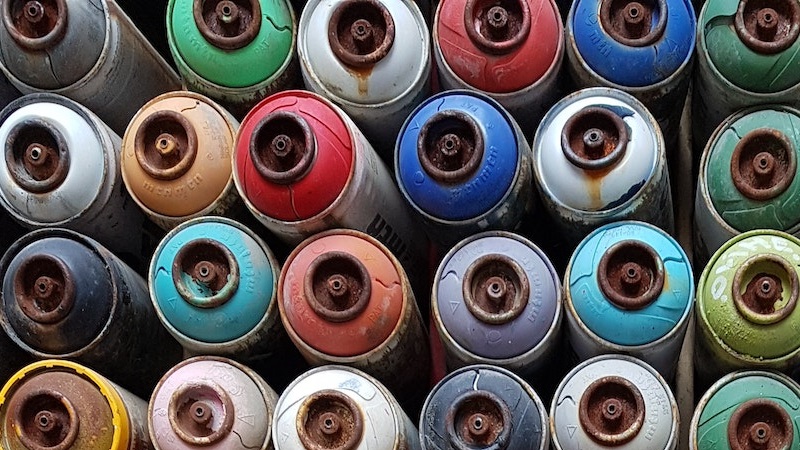
The global aerosol cans market is a rapidly growing market with increasing demand from various end-use industries. Aerosol cans are widely used for packaging a wide range of products including personal care, automotive, household products, and industrial applications. The market is expected to be driven by factors such as convenience, ease of use, and eco-friendliness. The global aerosol cans market is expected to grow at a CAGR of 5.2% during the forecast period of 2025 to 2033. The market growth can be attributed to the increasing adoption of aerosol cans in emerging economies, the growing demand for eco-friendly aerosol cans, and the rising demand for personal care products. The personal care industry is a significant end-use industry for aerosol cans, which are used for packaging various products such as deodorants, hair sprays, and other personal care products. The convenience offered by aerosol cans and their ease of use has contributed to their increasing demand in the personal care industry. The automotive industry is another significant end-use industry for aerosol cans, where they are used for applications such as spray painting and lubrication. The increasing demand for automotive maintenance products and the growing trend of do-it-yourself (DIY) car maintenance is expected to drive the demand for aerosol cans in the automotive industry. Overall, the global aerosol cans market is expected to witness significant growth in the coming years, driven by the increasing demand from various end-use industries. The increasing adoption of eco-friendly aerosol cans and the growing trend of do-it-yourself (DIY) car maintenance are expected to provide lucrative opportunities for market players in the coming years.

Convenience and Ease of Use
Aerosol cans are widely popular due to their convenience and ease of use. The spray nozzle on the can enables easy and efficient application of the product, without the need for any additional equipment or tools. This has made aerosol cans a preferred choice for many products such as personal care, household products, and automotive maintenance. The convenience offered by aerosol cans has also made them a popular choice for on-the-go applications, contributing to their growing demand.
Growing Demand for Sustainable Packaging
Sustainable packaging has become a key focus area for various industries due to increasing consumer awareness about the environment. Aerosol cans are considered to be eco-friendly as they are recyclable, and their low carbon footprint has contributed to their increasing adoption. Many companies are also focusing on developing aerosol cans made from biodegradable materials, further driving the demand for sustainable aerosol cans.
Increasing Demand from Emerging Economies
The emerging economies of Asia-Pacific, Latin America, and Africa have witnessed a significant increase in demand for aerosol cans due to increasing urbanization and rising disposable income. The personal care industry is a significant end-use industry for aerosol cans in these regions, with the increasing adoption of Western lifestyles driving the demand for personal care products. Additionally, the automotive industry is also witnessing significant growth in these regions, driven by increasing investments in the automotive sector. These factors have contributed to the increasing demand for aerosol cans in emerging economies, driving the growth of the market.
Environmental Concerns and Regulations to Limit the Market Expansion
Environmental concerns and regulations have been a major restraint for the aerosol cans market. Aerosol cans contain various chemicals that can harm the environment, especially if they are not disposed of properly. The improper disposal of aerosol cans can lead to air pollution and can also contaminate the water and soil. In addition, the use of chlorofluorocarbons (CFCs) in aerosol cans has been banned due to their harmful effects on the ozone layer. Many countries have also imposed regulations on the use of certain chemicals in aerosol cans, which has increased the cost of production for manufacturers. For instance, in the European Union, the use of certain chemicals such as hydrochlorofluorocarbons (HCFCs) and hydrofluorocarbons (HFCs) has been restricted. These regulations have compelled manufacturers to adopt new and eco-friendly technologies and materials, which has increased their production costs. The increasing focus on sustainable packaging has also compelled manufacturers to develop eco-friendly aerosol cans, which has further added to their production costs. The stringent regulations and increasing focus on sustainable packaging are expected to continue to be a major restraint for the aerosol cans market in the coming years.
Aluminum Cans Dominate the Market by Material Segment
Aluminum cans have been the most popular choice in the aerosol cans market due to their superior performance and recyclability. Aluminum cans are lightweight, corrosion-resistant, and impermeable to light and oxygen, which makes them an ideal choice for packaging products such as cosmetics, pharmaceuticals, and food. Moreover, aluminum cans are easy to recycle and can be reused to manufacture new cans, which has made them an eco-friendly choice for many manufacturers. As a result, the aluminum segment is expected to have the highest revenue share in the aerosol cans market. The plastic segment is expected to have the highest CAGR during the forecast period of 2025 to 2033, due to the increasing demand for lightweight and cost-effective packaging solutions. Plastic aerosol cans are lightweight and offer high flexibility, which makes them an ideal choice for packaging products such as insecticides, air fresheners, and lubricants. Moreover, plastic cans are easy to manufacture and can be customized to meet the specific needs of the customers. However, plastic cans are not as eco-friendly as aluminum cans and have been facing criticism for their environmental impact. Nevertheless, the convenience and low cost of plastic cans have continued to drive their demand.
The Personal Care Segment Leading the Market by End User Segment
The personal care segment held the highest revenue share in the market in 2024. The increasing consumer preference for personal care products, such as deodorants, hair sprays, and body mists, is a significant driver of the market. The household care segment is also expected to witness substantial growth due to the increasing demand for home cleaning and air freshening products. Moreover, the increasing consumer awareness regarding hygiene and cleanliness is further propelling the demand for household care products. The healthcare segment is also expected to witness significant growth owing to the increasing demand for medical aerosol cans for various applications, such as drug delivery, wound care, and disinfectants. The automotive segment is also expected to contribute significantly to the market growth due to the increasing demand for aerosol cans in automotive maintenance and repair activities. Furthermore, the increasing demand for aerosol cans for industrial applications such as paints, coatings, and lubricants is expected to drive market growth for the other end-user segment.
APAC Remains as the Global Leader
The Asia-Pacific region held the largest revenue share in the aerosol cans market in 2024 due to the high demand from the personal care and household care sectors. The region has seen a significant increase in the demand for aerosol cans in recent years, which is attributed to the growth in the population and the increasing urbanization. North America and Europe are the other significant markets for aerosol cans. The mature markets in these regions are driven by the increasing demand from the healthcare sector and the rising trend of using eco-friendly and sustainable packaging. The U.S. dominates the North American aerosol cans market, and the region is expected to have a CAGR of 4.1% during the forecast period of 2025 to 2033. The European market is driven by countries like Germany, the U.K., and France, which have significant market shares in the personal care and household care sectors. The European aerosol cans market is expected to have a CAGR of 4.5% during the forecast period of 2025 to 2033.
The Market Competition to Intensify during the Forecast Period
The global aerosol cans market is highly competitive, with the presence of several major players competing for market share. The market is characterized by continuous technological advancements, product innovations, and mergers and acquisitions. The key players in the market are focusing on expanding their product portfolios, improving product quality, and increasing their global reach through strategic partnerships and collaborations. Ball Corporation, Crown Holdings Inc., Ardagh Group S.A., Nampak Ltd., and CCL Container (Hermitage) Inc. are among the leading players in the global aerosol cans market. These companies are actively involved in product innovation, mergers and acquisitions, and collaborations to maintain their market position and expand their business. In November 2020, Ball Corporation completed the acquisition of TubexIndustria E Comercio de EmbalagensLtda, a Brazil-based manufacturer of aluminum aerosol packaging. This acquisition is expected to strengthen Ball Corporation's position in the South American market.
Historical & Forecast Period
This study report represents analysis of each segment from 2023 to 2033 considering 2024 as the base year. Compounded Annual Growth Rate (CAGR) for each of the respective segments estimated for the forecast period of 2025 to 2033.
The current report comprises of quantitative market estimations for each micro market for every geographical region and qualitative market analysis such as micro and macro environment analysis, market trends, competitive intelligence, segment analysis, porters five force model, top winning strategies, top investment markets, emerging trends and technological analysis, case studies, strategic conclusions and recommendations and other key market insights.
Research Methodology
The complete research study was conducted in three phases, namely: secondary research, primary research, and expert panel review. key data point that enables the estimation of Aerosol Cans market are as follows:
Market forecast was performed through proprietary software that analyzes various qualitative and quantitative factors. Growth rate and CAGR were estimated through intensive secondary and primary research. Data triangulation across various data points provides accuracy across various analyzed market segments in the report. Application of both top down and bottom-up approach for validation of market estimation assures logical, methodical and mathematical consistency of the quantitative data.
| ATTRIBUTE | DETAILS |
|---|---|
| Research Period | 2023-2033 |
| Base Year | 2024 |
| Forecast Period | 2025-2033 |
| Historical Year | 2023 |
| Unit | USD Million |
| Segmentation | |
Material
| |
Type
| |
Product
| |
End-Use
| |
|
Region Segment (2023-2033; US$ Million)
|
Key questions answered in this report